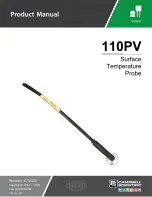20
3) RTU Controllers VZ7656X1000B Operation
The following information needs to be carefully read and properly understood if proper system
commissioning is to be achieved.
Unlike low end commercial or residential zoning controllers which typically only use two position demand or
non-demand logic to initialize heating and cooling functions, Viconics VZ7656X1000B uses local PI zone
demand(s) to operate heating and cooling stages. Accurate temperature control in the zones is achieved by
the time proportional control algorithm. This enables performances and control sequences much closer to
what is normally found in DDC application specific control devices.
The operation of the RTU controller is linked with the operation of the attached zone controllers. Although
the controller it will operate in a stand-alone mode if the communication network is down, normal operation
of the system as a whole requires that communication with the attached zone controllers is functional.
3A) Operation Data Exchanged
Independently of the network layer being BACnet MS-TP or Wireless, the flow of data exchanged between
the zones and the RTU controller can be summarized as follow:
Heating and cooling demand data is first exchanged from the zone controllers to the RTU
controller:
•
Current PI heating demand ( output value is based on PI heating weight configuration )
•
Current PI cooling demand ( output value is based on PI cooling weight configuration )
Each voting controller will also calculate its demand values based on the current occupancy mode and set
points in use: Unoccupied, Stand-By or Occupied.
Based on the control type function setting
(CntrlTyp)
, the RTU controller will calculate the resulting heating
and cooling zone demands. (See section 2A) Demand Based Heating and Cooling System).
Proper action to the heating or cooling stages using the time proportional control algorithm is accomplished
based on heating or cooling values.
-
If resulting calculated PI heating demand > resulting calculated PI cooling demand, then zone
sequence is heating
-
If resulting calculated PI cooling demand > resulting calculated PI heating demand, then zone
sequence is cooling
-
If resulting calculated PI cooling demand = resulting calculated PI heating demand, then zone
sequence stays in last selected mode
Many configuration and operating factors can limit action to the heating and cooling stages. Some example
of this would be:
-
Heating or cooling lockout based on outdoor air temperature ( configuration )
-
Heating or cooling lockout based on supply air temperature ( configuration )
-
Heating or cooling lockout based on anti-cycling ( configuration or RTU control card )
-
Fixed two minute delay when RTU toggles from heating to cooling and vice-versa ( operation )
The RTU controller will then forward data to the zone controllers. An example of the types of data relayed
would be:
•
Current central system occupancy
•
Current zone sequence to use ( hot air or cold air being delivered )
•
Outdoor air temperature


















